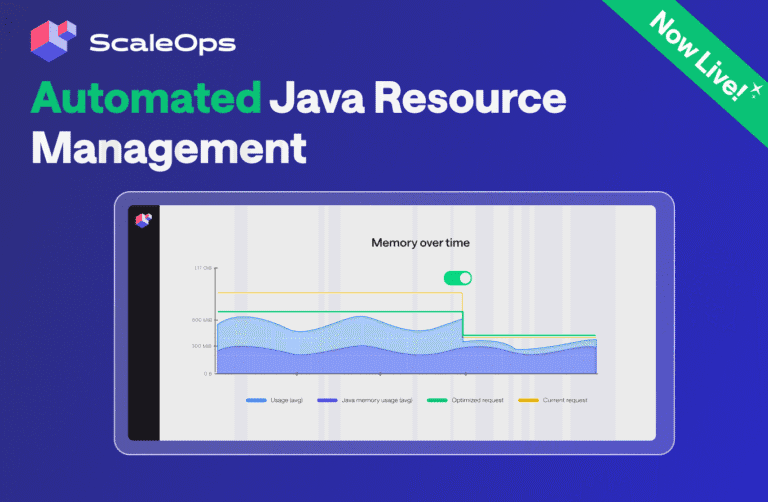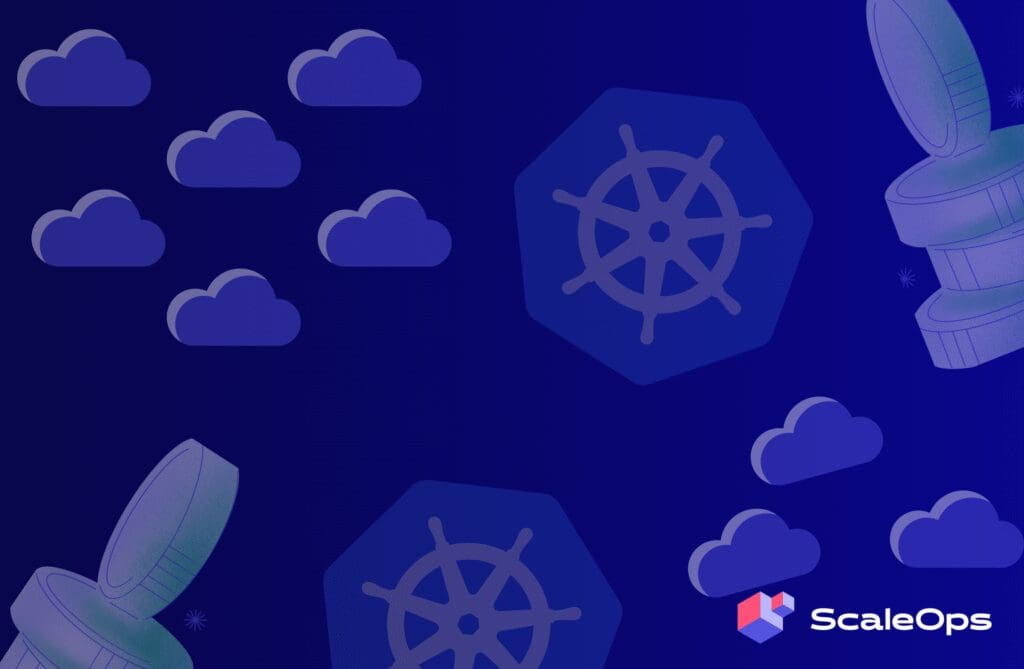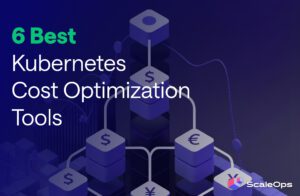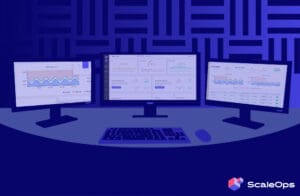Kubernetes costs tend to go unnoticed until the bill hits. You’re not just paying for the infrastructure, you’re also paying for the waste. Idle resources, forgotten workloads, and inefficient scaling quietly drain budgets. Pods scale up and down, storage expands, traffic flows across zones, all while costs accumulate out of sight.
Breaking Down Total Kubernetes Cost of Ownership
Kubernetes costs includes direct and indirect costs:
- Direct: Compute, storage, and network resources. Think EC2 instances, persistent volumes, and data transfer on EKS, GKE, or AKS.
- Indirect: Platform engineering time, monitoring tools, CI/CD overhead, and the day-to-day operational effort to run Kubernetes well.
Understanding total cost means accounting for both. This guide walks through what that looks like in practice.
Why Kubernetes Cost Monitoring and Management is Challenging
Kubernetes changed how we build and run applications, but it also introduced a new layer of cost complexity. Traditional pricing models fall short because they assume static workloads. In reality, cloud-native applications scale up and down constantly. Resource usage can vary hour by hour (even minute by minute), making it nearly impossible to rely on fixed cost forecasts.
To stay on the safe side, most teams overprovision. But that safety net comes at a price. The average Kubernetes cluster runs at just 30-50% utilization. That’s not a performance problem, it’s a resource management problem. There’s a disconnect between what gets requested, what actually gets used, and what it all ends up costing.
As Kubernetes adoption grows across organizations, so does the need for accurate cost attribution. FinOps and Finance teams need to know which teams or applications are driving spend. Platform teams need visibility to implement better policies and eliminate waste. Without that clarity, cost becomes everyone’s problem. And no one’s responsibility.
Primary Kubernetes Cost Components & Challenges with Estimating Cost
Kubernetes costs generally fall into four main categories:
- Compute: virtual machine, bare metal servers, and auto-scaling configurations
- Storage: Persistent volumes, container images, and backup systems
- Networking: Ingress traffic, load balancers, cross-zone and inter-service communication
- Cluster Management: Managed service fees and operational tooling costs
Knowing where the costs come from is just the starting point. The real challenge is understanding how they add up, and where they land.
Because Kubernetes is inherently dynamic, usage patterns change constantly. Auto-scaling introduces efficiency but also volatility. What makes Kubernetes powerful for engineering teams makes it unpredictable for finance. Cost forecasting tools built for static infrastructure simply can’t keep up.
That unpredictability doesn’t just affect budgeting. It breaks cost attribution, obscures accountability, and complicates every attempt at governance. Without better visibility and control, cost becomes a moving target.
Why Kubernetes Makes Cost Attribution Hard
Kubernetes was built for flexibility and efficiency, not finance. In most clusters, multiple teams, projects, and applications share the same infrastructure. That’s great for resource utilization, but it blurs the lines of responsibility when it comes to cost.
Traditional models made attribution easy. Each team owned its own servers. Kubernetes removes those boundaries. Now, costs flow through shared compute, storage, and networking layers, and the only way to untangle them is with labels, namespaces, and quotas. If teams remember to use them correctly.
Shared services like ingress controllers, monitoring tools, and security systems add another layer of complexity. Everyone benefits, but no one “owns” the bill.
Multi-tenant clusters make it even harder. They reduce infrastructure costs, but without sophisticated metering and attribution, it’s nearly impossible to answer a simple question: who’s driving spend, and by how much?
The Visibility Gap that Hides Kubernetes Cost Waste
Cloud billing tells you what you’re spending, but not why. Most providers report usage at the infrastructure level: VM hours, storage, and network traffic. That might be enough for traditional workloads, but it doesn’t give you the insights needed to manage Kubernetes effectively.
To control costs, you need to understand which pods, containers, and applications are driving spend. Kubernetes metrics show resource usage, but they don’t translate directly into cost. Getting that level of clarity requires pulling in pricing data, reserved capacity details, and efficiency ratios, often across fragmented systems.
Time makes the problem even harder. Infrastructure costs run continuously, but workload usage changes constantly. A short traffic spike might trigger autoscaling, yet the cost gets averaged across the entire day. That makes it difficult to isolate where waste is coming from or when it happens.
And resource waste isn’t just about low utilization. It means comparing what was requested to what was used, while factoring in safety margins, performance needs, and scaling buffers. Simple metrics don’t tell the full story. Without application context, optimization efforts miss the mark.
Best Practices to Optimize Kubernetes Costs
1. Regular Audits of Resource Usage and Costs
Implementing systematic Kubernetes cost optimization requires establishing regular audit processes that examine both resource utilization patterns and cost trends. Establish a recurring audit process to track usage patterns and cost trends at multiple levels:
- Daily: Surface cost spikes, over-provisioned workloads, and scaling inefficiencies through automated alerts and dashboards.
- Weekly: Analyze scaling patterns, identify underutilized resources, and review the impact of optimization initiatives
- Monthly: Evaluate overall cost trajectory and ROI with engineering and finance to align technical decisions with business goals.
Audits should include analysis of requested vs. actual usage to identify opportunities for improvement. But resource management must be balanced against performance needs and scaling buffers. Cutting too aggressively introduces risk.
2. Implement Tagging and Labeling for Cost Attribution
Effective Kubernetes cost management requires implementing comprehensive tagging and labeling strategies that enable accurate cost attribution across teams, projects, and applications. Kubernetes labels provide the foundation for cost allocation, but they must be implemented consistently and maintained rigorously.
Organizations should establish standardized labeling conventions that include cost center information, project identifiers, environment designations, and team ownership details. These labels should be applied to all Kubernetes resources including pods, services, persistent volumes, and ingress controllers.
Automation is crucial for maintaining labeling consistency. Admission controllers can enforce labeling requirements, preventing resource creation without appropriate cost attribution labels. GitOps workflows can validate that deployment manifests include required labels before they’re applied to clusters.
Resource quotas and limit ranges should align with labeling strategies to provide both technical resource controls and cost boundaries. Teams should have clear visibility into their resource consumption and associated costs, enabling them to make informed decisions about resource allocation and optimization.
Namespace-based organization can complement labeling strategies by providing clear boundaries for cost attribution. However, namespaces alone are insufficient for complex cost allocation scenarios, requiring additional labeling for granular attribution.
3. Make Cost Data Actionable for Engineers and Application Teams
Kubernetes cost optimization is most effective when engineering teams understand the financial implications of their deployment decisions. Organizations should invest in education and tooling that makes cost information accessible and actionable for engineering teams.
Cost visibility tools should be integrated into developer workflows, providing real-time feedback on the cost implications of deployment changes. This might include cost estimates in pull request reviews, cost dashboards in CI/CD pipelines, or cost alerts when deployments exceed predetermined thresholds.
Organizations should also establish cost budgets and accountability mechanisms at the team level. When teams have clear cost targets and regular feedback based on those targets, they naturally develop more cost-conscious deployment practices.
4. Use a Kubernetes Cost Optimization Platform
Basic monitoring tools weren’t built for the complexity of Kubernetes. Purpose-built platforms like ScaleOps bring together cost visibility, real-time optimization, and accurate attribution.
They work across clusters, providers, and environments. They factor in workload variability, scaling strategies, and application context. And they automate resource management without disrupting developer workflows. With ScaleOps, Cost optimization evolves from a reactive task to an automated, ongoing process. Simply activate it, and it will optimize your workloads for you.
Demystifying Kubernetes Cost Management
Kubernetes cost management can feel overwhelming at first. But once you understand the types of workloads running in your clusters and how they consume resources, the path forward becomes clear. It all starts with visibility into actual usage: knowing which applications are consuming which resources, when, and why.
With that visibility, cost optimization becomes achievable. It’s not about chasing quick wins. It’s a long-term effort that requires consistency and adaptation as your infrastructure evolves. The teams that treat it as an ongoing discipline, not a one-time task, are the ones that see the strongest results.
This is where purpose-built platforms like ScaleOps make a real difference. They give you the visibility, attribution, and automation you need to manage costs continuously, without disrupting operations. And the return goes far beyond just cutting spend. Teams become more efficient, architectural decisions improve, and engineering and finance stay aligned.
Kubernetes cost management is not just about saving money. It’s about building a more scalable, efficient, and accountable organization.























